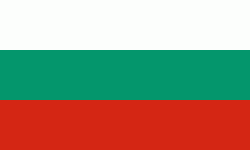Novi Iskar (Novi Iskar)
Novi Iskar (Нови Искър ) is a town in Western Bulgaria, located in Sofia City Province, which is a part of the Municipality of Sofia (the capital of Bulgaria). It is often regarded as a northern suburb of Bulgarian capital Sofia and lies in the northern part of the Sofia Valley, with the Iskar Gorge beginning just north of the town.
The town of Novi Iskar was formed in May 1974 with the merging of 3 villages: Aleksandar Voykov, Gnilyane and Kurilo. The village of Aleksandar Voykov was formed in 1955 when the Kumaritsa and Slavovtsi villages were merged. Initially a villa area, Izgrev is nowadays a district of the town.
Today, Novi Iskar consists of 5 districts: Slavovtsi, Kumaritsa, Kurilo, Izgrev and Gnilyane.
Cape Kurilo in Snow Island, South Shetland Islands is named after the district of Kurilo.
The town of Novi Iskar was formed in May 1974 with the merging of 3 villages: Aleksandar Voykov, Gnilyane and Kurilo. The village of Aleksandar Voykov was formed in 1955 when the Kumaritsa and Slavovtsi villages were merged. Initially a villa area, Izgrev is nowadays a district of the town.
Today, Novi Iskar consists of 5 districts: Slavovtsi, Kumaritsa, Kurilo, Izgrev and Gnilyane.
Cape Kurilo in Snow Island, South Shetland Islands is named after the district of Kurilo.
Map - Novi Iskar (Novi Iskar)
Map
Country - Bulgaria
 |
 |
| Flag of Bulgaria | |
One of the earliest societies in the lands of modern-day Bulgaria was the Neolithic Karanovo culture, which dates back to 6,500 BC. In the 6th to 3rd century BC the region was a battleground for ancient Thracians, Persians, Celts and Macedonians; stability came when the Roman Empire conquered the region in AD 45. After the Roman state splintered, tribal invasions in the region resumed. Around the 6th century, these territories were settled by the early Slavs. The Bulgars, led by Asparuh, attacked from the lands of Old Great Bulgaria and permanently invaded the Balkans in the late 7th century. They established the First Bulgarian Empire, victoriously recognised by treaty in 681 AD by the Eastern Roman Empire. It dominated most of the Balkans and significantly influenced Slavic cultures by developing the Cyrillic script. The First Bulgarian Empire lasted until the early 11th century, when Byzantine emperor Basil II conquered and dismantled it. A successful Bulgarian revolt in 1185 established a Second Bulgarian Empire, which reached its apex under Ivan Asen II (1218–1241). After numerous exhausting wars and feudal strife, the empire disintegrated and in 1396 fell under Ottoman rule for nearly five centuries.
Currency / Language
| ISO | Currency | Symbol | Significant figures |
|---|---|---|---|
| BGN | Bulgarian lev | лв | 2 |
| ISO | Language |
|---|---|
| BG | Bulgarian language |
| TR | Turkish language |















